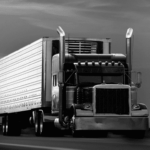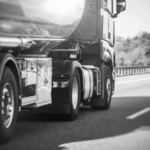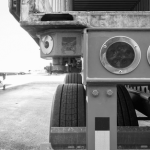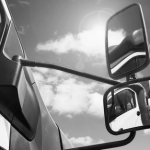Last week, a semi and an RV being pulled by a pickup blew over on I-29 due to high winds. In North Dakota and Minnesota, it gets windy often, no matter the time of year. But, should a semi ever blow over due to high winds? Or, should a semi ever blow over into your lane because of high winds? If they are following the rules that apply to semis, the answer is no. But why is it important?
As we have stated on this blog many times, the rules that apply to semi drivers are different from drivers of regular cars. That’s because semis create a deadly hazard as high profile vehicles to all the rest of us/our families when driving in dangerously high winds. If a semi comes into your lane or tips over on the road in traffic (or onto a vehicle), the results can be catastrophic. Thankfully, the incident last week did not cause a crash with other vehicles. But, that is not always the case, which is why the rules are important.
The Rules For Semis In High Winds
The Federal Motor Carrier Safety Regulations (FMCSRs) are law in the United States. 49 CFR §392.14 requires that extreme caution must be exercised when hazardous conditions adversely affect traction. A semi that could tip over is a semi without traction. 49 CFR §392.14 is also clear that in hazardous conditions that become sufficiently dangerous (e.g., dangerous high winds), the operation of a semi must be discontinued and must not be resumed until the semi can be safely operated. So, if winds are high enough that they create a danger for a semi to tip over, or even maintain its lane, the semi should be pulled off the road until the wind dies down.
On top of that, 49 C.F.R. §383.110 and 49 C.F.R. §383.111 require states in the US to include certain items in the knowledge and skills test they administer to CDL drivers, including driving in extreme conditions (like high winds). North Dakota and Minnesota comply with this regulation by requiring people who are testing to obtain a CDL to study the CDL Manual (ND and MN). So, what do the CDL Manuals of North Dakota and Minnesota say about high winds as it relates to semis?
Both North Dakota’s and Minnesota’s CDL Manuals contain Section 2.7.3, which states:
Strong Winds. Strong winds make it difficult to stay in your lane. The problem is usually worse for lighter vehicles. This problem can be especially bad coming out of tunnels. Don’t drive alongside others if you can avoid it.
To follow this rule, the only way to avoid driving alongside others if the winds become dangerous enough is to get off the road. So, semis should never be driving in windy conditions that affect their ability to maintain their lanes, let alone conditions that threaten to blow over the semi altogether.
Conclusion
Because of the danger to the rest of us on the road in passenger vehicles, semi drivers have to play by different rules while driving in windy conditions. While we have all likely witnessed (and been scared by) semis coming over into our lane in windy conditions in North Dakota and Minnesota, this should not happen if they are following the rules.
If you or a loved one have been injured or killed in a crash involving a semi/bus or other commercial motor vehicle, it’s important you hire an attorney who knows the special rules that apply to semi/bus/commercial motor vehicle drivers. Our team at SW&L Attorneys knows those rules, and applies them to hold all parties responsible for the injuries or death involving these big vehicles. If you or a loved one have been in a catastrophic crash with any commercial motor vehicle, and want to speak to an attorney to see if it had anything to do with safety, please give Nathan a call at (701) 297-2890 or email at nathan.severson@swlattorneys.com










